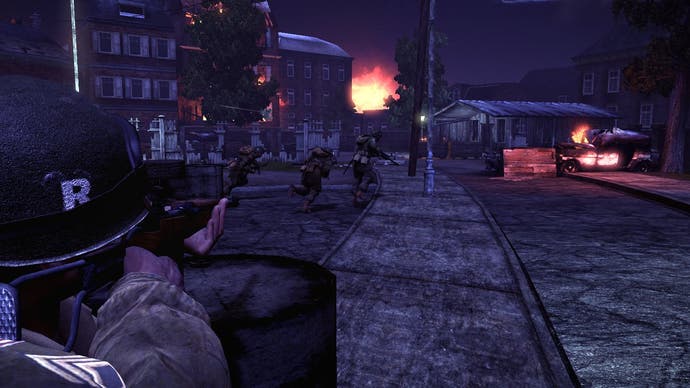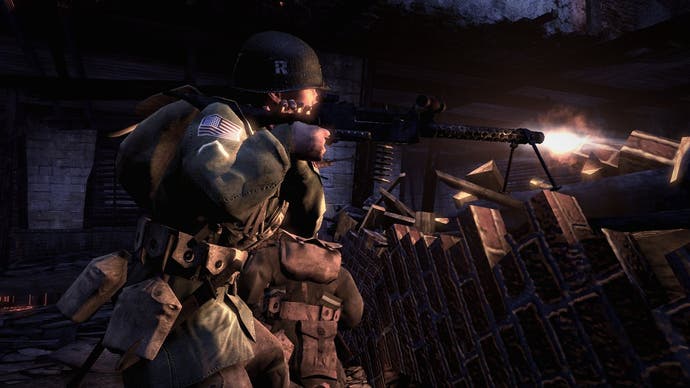Brothers in Arms: Hell's Highway
Take it to the bridge.
War is hell. That's a given. But war is also, increasingly, window-dressing: a thin historical veneer that allows developers to mine the past for easy brand recognition, while turning out arcade set-pieces that have little to do with the wider reality behind the uniforms.
Brothers in Arms has always been a bit different, however. Its emphasis on believable squad-based tactics will see you dead in the dirt if you try to run-and-gun your way through its carefully-weighted encounters. Equally, Gearbox, the games' developer, has always tried to bring a bit of genuine insight to the series' battlefields, closely following the history of real missions, while offering a glimpse into the lives of the people involved. It may not be The Sorrow and the Pity, but it's hardly Operation Darkness, either.
And with the long-awaited third game in the series about to hit the beach later this September, Matt Baker and the rest of the 101st Airborne Division finally make it to Operation Market Garden, one of the most grimly fascinating and bloody encounters of World War II.
Market Garden took place in the Netherlands in September of 1944, as an attempt to get Allied forces across the river Rhine and on towards Berlin. Using large-scale paratrooper drops to secure three key bridges for the British XXX Corps to then move through, it was an ambitious and creative bit of strategic thinking. It was also, ultimately, a failure, which saw thousands of soldiers dead, and the war dragging on well into 1945.

Most of Brother's in Arms: Hell's Highway is focused on the sharpest end of the action, with 101st Division fighting to keep the stretch of road towards Eindhoven open for XXX Corps' advance, battling against heavy Axis counter-attacks all the while. So far, so Wikipedia, but the series' emphasis on the soldiers themselves means it's uniquely placed to take this kind of history and bring it to life. A recent chance to sit down with the first few levels of the (now practically finished) game gave us the opportunity to check up on how Gearbox is squeezing such an elaborate chain of battles into the close-quarters dynamic of the franchise.
As the nickname suggests, Hell's Highway was not a particularly nice place to be, but while the game's title may invoke blood-soaked chaos, the opening levels, following the 101st shortly after they parachute in to Holland, paints a picture of small-scale skirmish-based warfare juxtaposed with bizarrely idyllic landscapes. Gunfights erupt in gentle farmland pastures, against backdrops of bright yellow crops and blue skies, which could almost have been pulled from the Wizard of Oz, were it not for the distinct lack of Munchkins. But the environment is far from mere set dressing: almost everything in the landscape has some kind of bearing on your available tactics, from the windmills, which offer strategic recon points, to the farmhouses, which are transformed into careful three-dimensional battle puzzles to be approached with caution.

And the Netherlands don't provide the only difference this time around. A first for the series, Hell's Highway has a fully-implemented cover system, with 'digging-in' allowing you to hunker down beside a wall or bluff, take shots from relative safety, and even vault over the top at the touch of a button. While it's clear that Gearbox has been taking notes from Gears of War (which itself took a fair amount from kill.switch), it's also brought its own emphasis to bear. The crucial thing to remember in Hell's Highway's world is exactly what it is you're hiding behind: a slatted fence may offer concealment from the enemy, but if you're spotted, it will be torn up by gunfire far more quickly than a stone wall would be. This dynamically-destructible environment adds yet another layer of tactical thinking to the game's maps, and it's an undeniable thrill to see your machineguns chew through fence posts and furniture, blasting splinters into the air and sending the enemy hurrying for a better spot.








